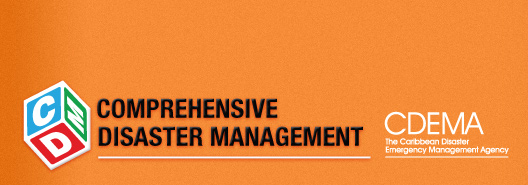
| Tsunami |
|
What is a Tsunami? A tsunami (pronounced soo-NAHM-ee) is a series of ocean waves caused by a major disturbance of the ocean floor, such as a large underwater earthquake, landslide or volcanic eruption. The waves travel outwards away from the origin of the disturbance – much like the ripples you see when you throw a rock in a puddle. Tsunami waves can travel at hundreds of miles per hour and crash into shorelines with waves of over 30 metres. Tsunamis can last for several hours or only a few minutes. The word tsunami is Japanese and means “harbour wave”. Tsunamis and the Caribbean Right now, a tsunami is a potential hazard for the Caribbean, rather than a real major hazard. Although, that doesn’t mean you can go unprepared. There hasn’t been a deadly tsunami in the region for centuries but off the coast of Grenada, the submarine volcano, Kick `em Jenny, is evolving into a condition where it is more likely to generate a significant tsunami. There is a 50% chance that Kick `em Jenny will generate a significant tsunami (amplitude more than ten meters at ten kilometers from source) within the next 50 years. What a tsunami is not! Tsunamis are sometimes called tidal waves, but this is wrong. A tsunami has nothing to with ocean tides. Tides are caused by gravitational influences of the moon, sun and planets while tsunamis are mainly caused by earthquakes, landslides and volcanic eruptions. In a Tsunami the sea first withdraws an unusual distance and then returns like a rapidly-rising tide flooding low-lying areas. This may be repeated several times. Characteristics of a tsunami
Issues The most serious impact of a tsunami would be the flooding they cause. They are capable of flooding hundreds of meters inland. Water from the tsunami also moves fast and can crush homes and other coastal structures. Tsunamis can sweep boats onto shore and obviously, they can drown people and animals too. Drowning is the most common cause of death associated with a tsunami. The deadliest tsunamis in recorded history were the Christmas tsunamis of 2004 in the Indian Ocean. On December 24, 2004, a massive 9.2 earthquake occurred off the island of Sumatra. It created a deadly series of tsunamis that swept Indonesia, India, Madagascar, and Ethiopia. The death toll was estimated to be in around 300,000 to 350,000. Also, tsunamis can strip beaches of sand that may have taken years to accumulate and destroy trees and other coastal vegetation. Areas are at greater risk for tsunamis if they are less than 25 feet above sea level and within a mile of the shoreline. Other hazards include contamination of drinking water, and fires from gas lines or ruptured tanks. History 1. When? November 18,1867 Where? Virgin Islands Aftermath? A magnitude 7.5 earthquake-generated tsunami may have killed up to 20 people. Eyewitness accounts describe the waves as being between 4.5 and 7.8 meters high. 2. When? July 24, 1939 Where? Leeward Islands Aftermath? When Kick 'em Jenny erupted in 1939, it generated a tsunami with an amplitude of 1-2 |
|
Looking for:
|











